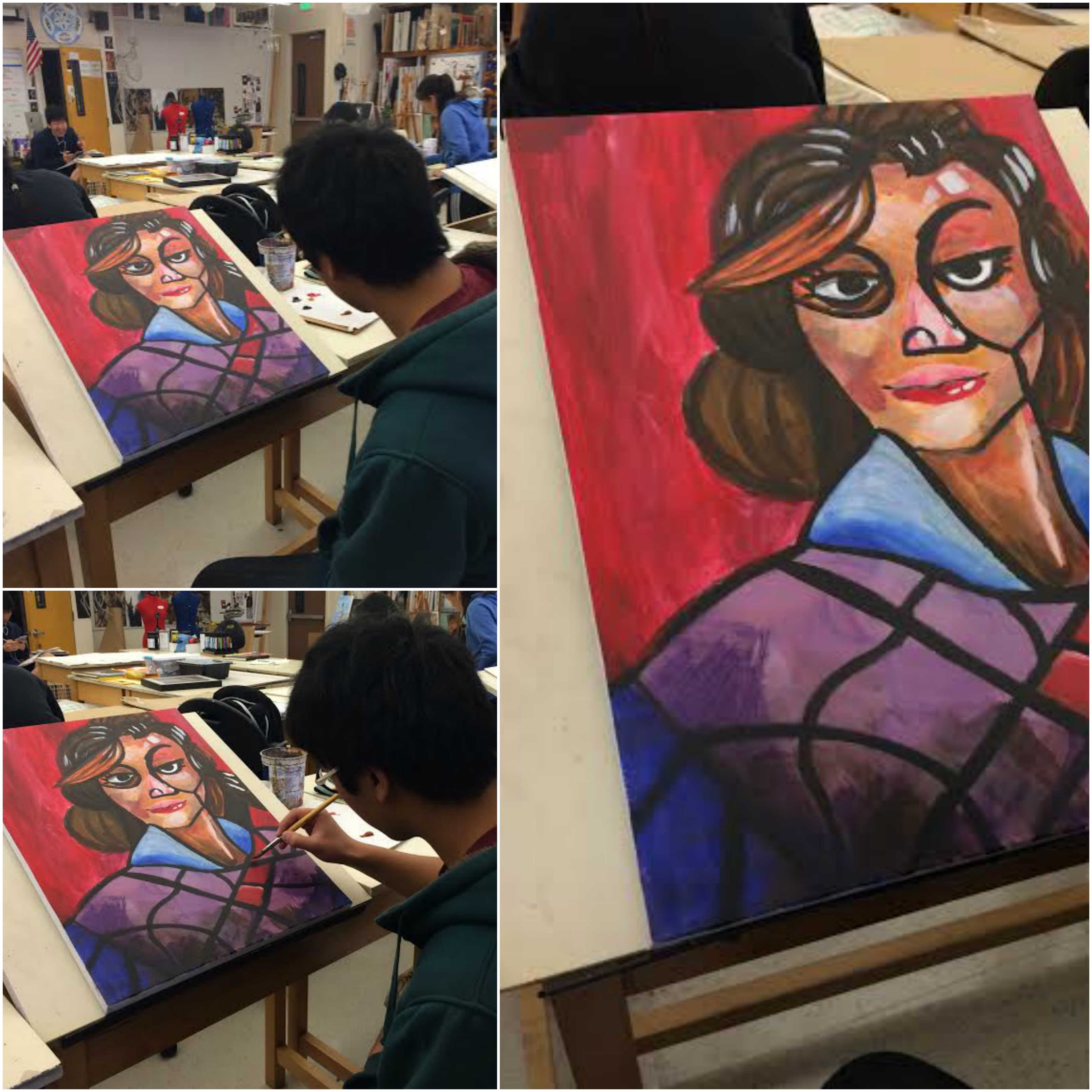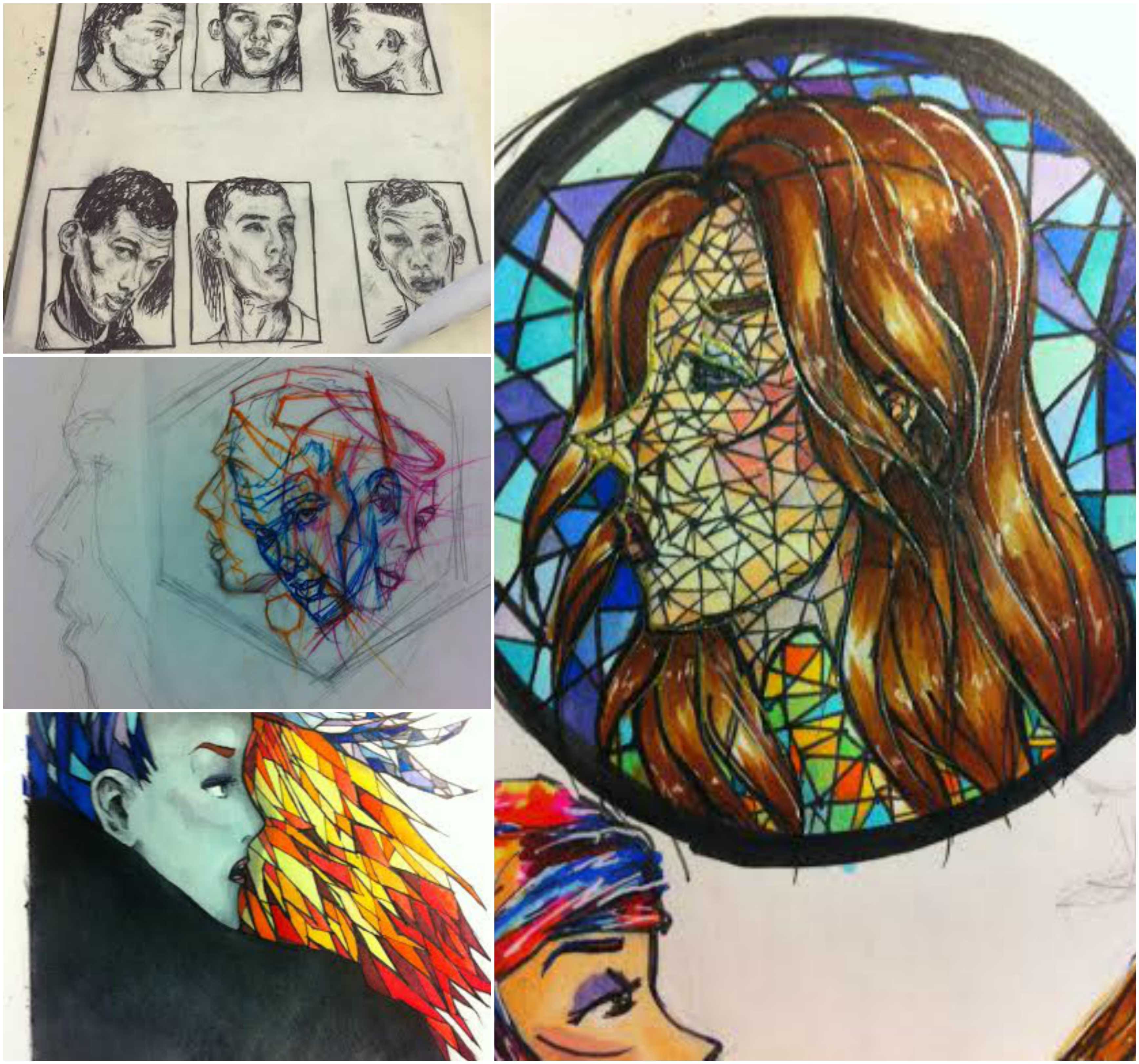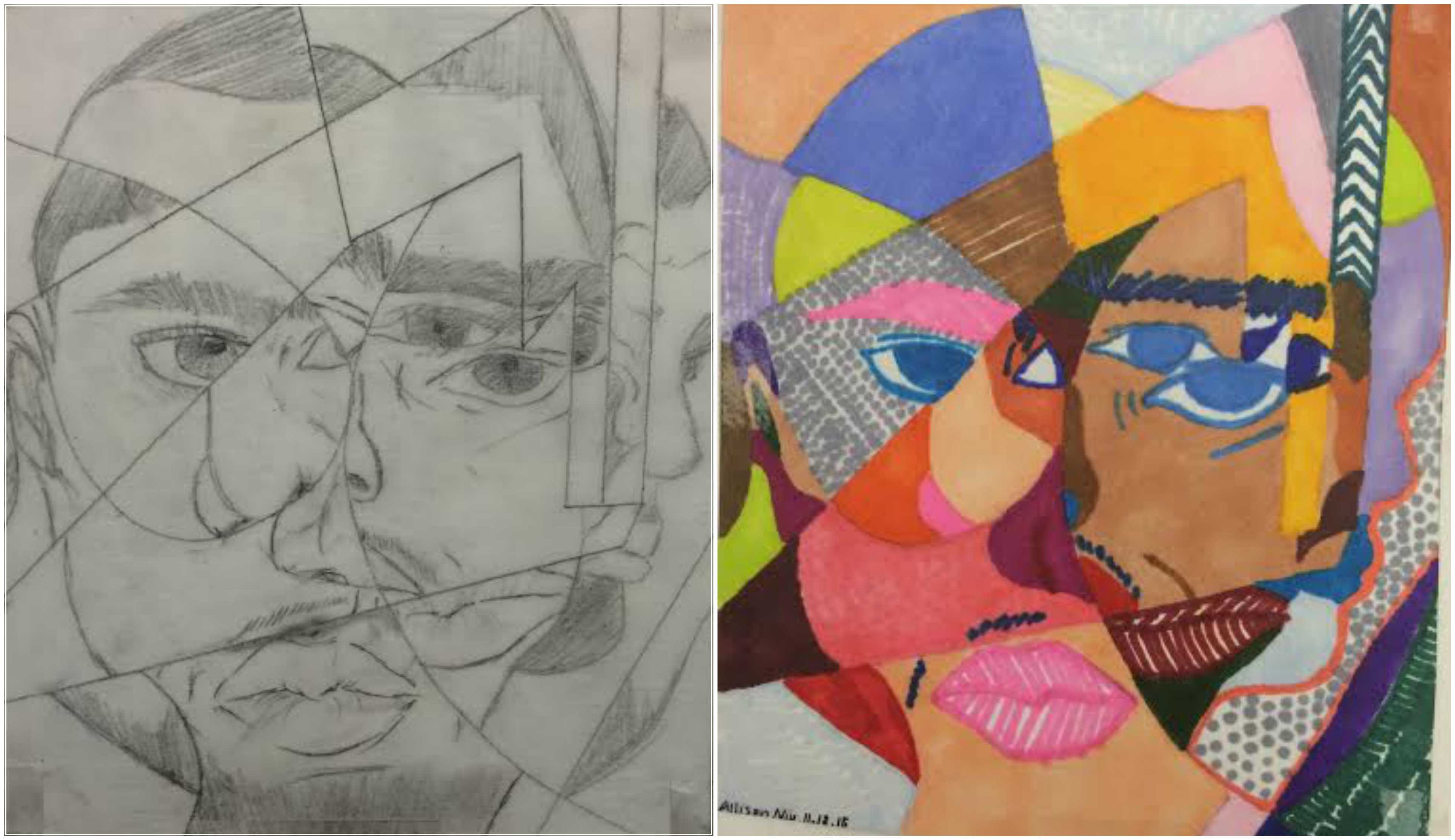On Oct. 25, Brian Chow taught his Art 3 class how to draw in Pablo Picasso’s famous cubist style, in honor of the artist’s birthday. Students, in response, have taken cubism and molded it into their own art style.
First exposure
Junior Andrew Chang, before Oct. 25, did not have much experience with cubism. Cubism, despite being a revolutionary art style, is often overlooked or oversimplified — Chang used to associated cubist works with blocky, harsh shapes and disorienting lines. It wasn’t until the lecture that Chang realized cubism could be a lot more than what’s on paper.
“Chow did a good job teaching us how the artists approached Cubism,” Chang said, “so I took Picasso’s style and put it into my own art.”

“What I learned from Shelton in freshmen year was that you had to keep the one or two features distinct to the person and exaggerate it,” Chang said. “My subject, Gal Gadot, she has very pronounced cheekbones. So I made it super bold. She also has big eyes, so I exaggerated that too.”
More of his artwork can be found on his Instagram, here.
Long time influence
Senior Mika Philip has been exposed to many cubist works — from all the way back in elementary school. She uses patterns, hardlines and shapes in her artwork, so while she says that her artwork is not strictly “cubist”, she does call back to the geometric shapes Picasso uses to separate his subject in his paintings.

“[Picasso influenced my work because] I like to use a lot of bright colors, and I like a lot of Impressionist paintings,” Philip said. “I love how unreal it is; once it is done properly it is actually really beautiful, than just the picture of the person themselves.”
A way of expression
Junior Allison Niu does not have much experience in cubism either, but she finds that cubism is a creative way to express her ideas. She enjoys being able to manipulate artwork into creating something completely unique, but she still wants to ground her work in the realistic aspects of art in the different perspectives she draws.

[This unit influenced] my art because it is more focused on looking at things from multiple angles,” Niu said, “where in Classical works of art you are only looking at it in one perspective — using multiple perspectives plays into how movement influences artwork.”







